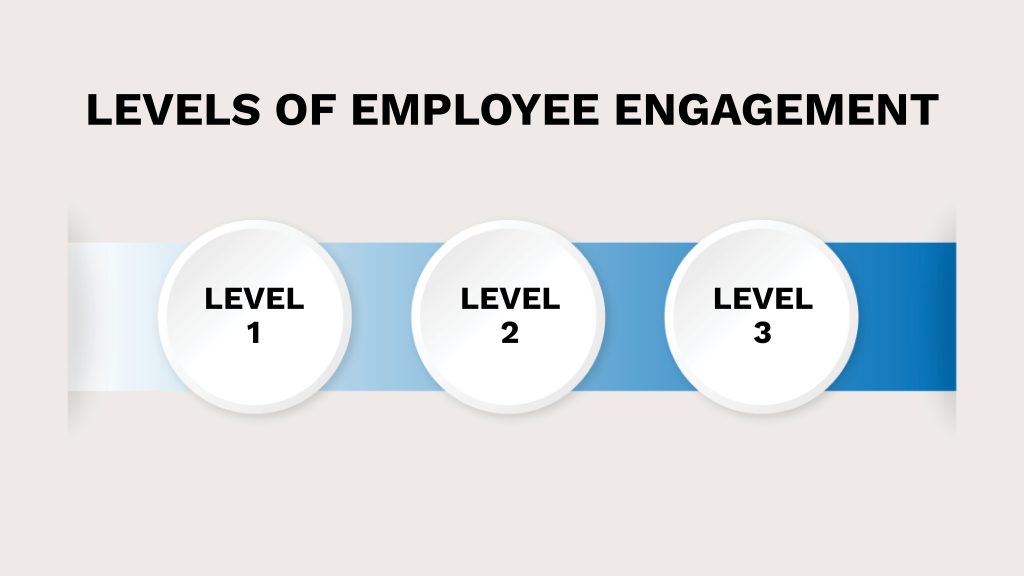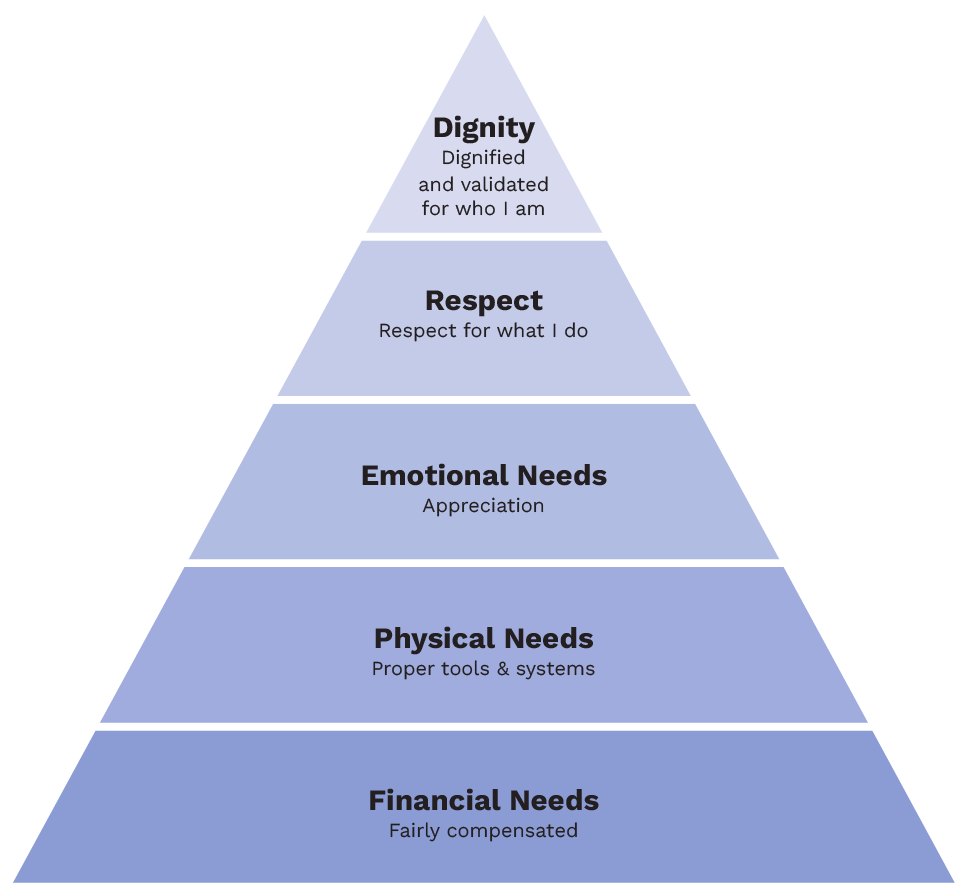The 3 levels of employee engagement and how to raise them at your company
Wednesday, March 13, 2024 - Dignify

Levels of employee engagement
There are many ways to split up levels of employee engagement, but we like to use Gallup’s three categories – actively disengaged, not engaged, and actively engaged.
Actively disengaged
An actively disengaged employee is one that, for one reason or another, is making a conscious and intentional decision to remain disengaged from their work, their workplace, and oftentimes their co-workers. Not only that, but they make sure that their dissatisfaction is known, and not always in the healthiest way. Here are some examples of what it can look like:
- A negative and unapproachable attitude
- Don’t perform to standard, and don’t make a true attempt to grow
- Do not collaborate or socialize well with their teammates
- Spark up conflict with their peers or leaders
- Do the bare minimum, or less
Regardless of how they express it, these are employees who have not had their needs met, don’t feel supported, and don’t see a reason to put forth much effort. The likelihood is that they’ve had problems in their role for a prolonged period of time that haven’t changed in any substantial way. It could be stress leading to burnout, unhealthy conflict leading to anger, lack of proper compensation, or any mix of problems that would drive an employee to this point.
As a leader, if you’re interested in retaining an actively disengaged employee, you need to take a very proactive approach to solving their problems.
- Schedule a meeting with them (however long it takes)
- Genuinely listen to what they have to say
- Make sure they know they can express their honest thoughts, or “last 10%” as we call it, safe from judgment and repercussions
- Absorb what they say as nothing more than useful information rather than becoming defensive
You can use what they say to build your action steps to address their problems, have a positive impact on them, and hopefully influence them to engage with their work and stick around.
Not engaged
Employees in the not engaged category aren’t quite to the level of being actively disengaged, but definitely not engaged either. They are either consciously or unconsciously just doing the bare minimum to get by. They don’t express passion for their work and are just doing what they need to get to the next paycheck. Although they aren’t as frustrated or as negligent as their fully disengaged colleagues can be, these employees aren’t performing anywhere near their full potential. Here are some examples of this level of engagement in action:
- Quiet quitting
- Reluctant to take on more responsibilities
- Uninvolved or disconnected from co-workers
- Express a more negative or disinterested attitude
- Less responsive or collaborative
- Lacking will to go above and beyond
A disengaged employee is one that isn’t getting their problems addressed but hasn’t quite reached a severe enough level of frustration to make it totally obvious. The signs of a disengaged employee are subtle, quiet, and often go unnoticed without an attentive approach.
For example, they may still meet their deadlines, but the quality of their work might not be as good as you know it can be. Or, they may collaborate well when they need to and do what’s asked of them, but never make an attempt of their own to learn more or help others.
The leader’s approach to moving a “not engaged” employee out of their slump is very similar to the above. You need to listen to their problems, take steps to remedy them, and show them that you are making an active effort to work in their best interest. By actively supporting your employee, you are pulling your end of the bargain and doing everything you can to get them back on track.
Actively engaged
Actively engaged employees are your rockstars. You hardly have to be told what they look like – you know one when you see one. These employees are passionate about what they do, care about the company’s goals and objectives, collaborate very well with teammates and customers, and are constantly looking to go above and beyond.
They express a wide range of different positive behaviors, including but not limited to optimism, enthusiasm, and strong commitment. Actively engaged employees are the ones that drive financial success, keep cultures strong, and set the example for their peers.
All of this is likely because they are satisfied in their role. You’ve done a good job supporting them. They feel comfortable expressing their problems and needs to you, and you have done a good job taking action steps to support them in a timely and tangible manner. Continue making sure they’re satisfied where they are, and provide them with as many opportunities for growth as you can.
What’s behind the levels of engagement? How do I raise them?
If you read through each level of engagement, you’ll notice that there was a common thread in each one – needs. Employee engagement, at its most fundamental level, all comes down to how well you are supporting someone’s needs. An employee who isn’t having their needs supported will be disengaged. One that is having their needs supported will be the opposite – engaged.

At Dignify, we have a convenient way to break down employee needs. It’s called the Employee Hierarchy of Needs, and it takes inspiration from Maslow’s Hierarchy of Needs. From the bottom of the hierarchy upwards, the employee needs are:
- Financial
- Physical
- Emotional
- Respect
- Dignity
In order to have a fully engaged employee, each of the five levels of the pyramid need to be met. You can’t just fulfill a few parts and not the others, as that will often result in a
“not engaged” employee, and at worst, an “actively disengaged employee.”
For example, an employee that feels dignified and respected, yet is underpaid for the work they do, will not be an engaged employee. The same goes for someone who is paid fairly and has everything they need to do their job, but doesn’t feel appreciated, respected, or dignified in their role.
Although driving employee engagement can be a very complex matter, the Employee Hierarchy of Needs provides you with five fundamental questions you can ask yourself (and your employees) to assess what you need to do to improve it.
- Are you compensating your employees fairly for the work they do?
- Do your employees have what they need to fulfill their responsibilities?
- Is communication healthy at your organization? Do people feel appreciated and have positive relationships with one another?
- Do people feel respected and honored?
- Are people recognized for who they are?

